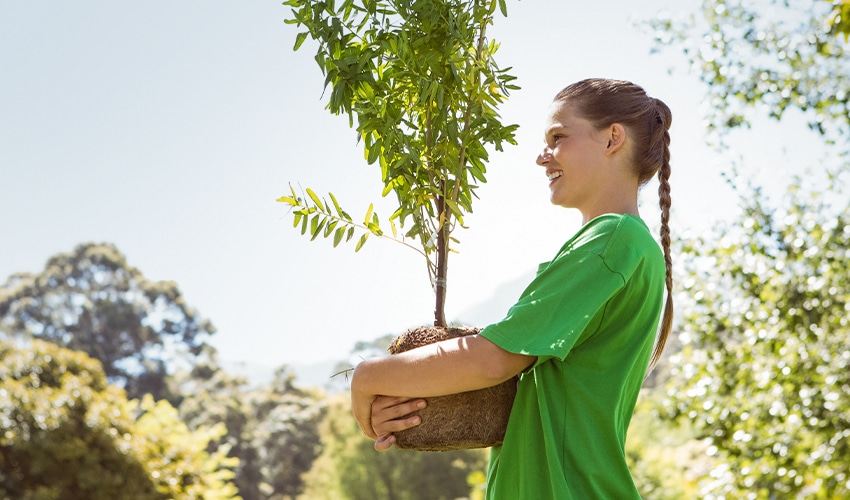Planting a tree can boost your curb appeal and enhance your home’s privacy. But homeowners commit common mistakes with their trees. Learn about them here.
Trees are one of the best things in nature ever created. They provide shade, cool down the hot air, and prevent flash floods. Yet we abuse them and rid our lands of it. Thankfully, many homeowners plant a tree or two in their yards to help make a change. Not only do they help with reforestation efforts, but also in conserving energy because trees can cut down energy bills.
However, maintaining trees can be a little tricky. Its branches can allow pests to crawl into your home. They may also pose a safety hazard during typhoons. And some trees are more high-maintenance than others.
Homeowners can make a mistake when they’re just choosing a tree. To avoid tree-planting and maintenance mistakes, here are the dos and don’ts of having a tree in your yard:
Do: Choose a Tree Good for Small Spaces
Since a typical yard isn’t so spacious, a small tree is more appropriate than big ones. An oak tree may provide the best shade, but its roots may damage your pavers. So consider the following instead:
- Prairifaire Crabapple
If you love cherry blossoms, the prairifaire crabapple can produce pink flowers that are just as beautiful. They’ll burst out in the spring, and by fall and winter, they’ll also bear small, purplish fruits. Plant it in a 20-by-20 feet full-sun spot. They’ll look best flanking your gate.
- Japanese Stewartia
This ten-foot-tall tree produces white flowers in mid-summer and rich, green foliage throughout the season. Because of its small size and relatively short height, you can plant more than one of it or surround your yard with it.
- Japanese Maple
The Japanese maple is a classic tree for many small yards. Its striking foliage gives a dramatic mood to your landscape. The leaves are red in spring, bronze in summer, and brilliant orange in fall. It’ll grow 12 feet tall and wide, so allot a generous space for it in your small yard.
Don’t: Skip Soil Testing Before Planting a Tree
Like any other plant, a tree grows the healthiest when it’s on the right soil. If the leaves of your tree aren’t changing colors the way they should, your soil might be the problem. Buy a soil testing kit to determine the minerals in your soil and its pH levels. If the test results show that it’s the culprit for your tree’s poor health, you can condition your soil to promote healthier tree growth.
Do: Trim Your Trees Regularly
Trees also need regular “haircuts” to maintain their lush foliage. Depending on your tree’s height, you can do it yourself or enlist a tree service pro to do it for you. A pro is essential if you often forget trimming duties. They won’t just help you trim and prune your tree but also ensure that the soil, bark, and leaves are all in good health.
Don’t: Climb Your Tree Using a Climbing Spike
Climbing spikes help your feet stay rooted to the tree when you’re climbing it. Some pros also use it, but only when they’re removing a tree, not pruning it. Using spikes on a living tree hurts the bark and kills healthy tissues.
Basically, a tree’s bark is like a person’s skin. If you puncture it, you’ll injure it and maybe even infect it. So if you want to prune your tree without a pro, use a ladder instead of climbing spikes. Reserve those things for when you have to cut down a deceased tree.
Do: Mulch
Mulching will also benefit trees. It will help insulate the soil and thus protect the tree from drastic temperature changes. It also retains water in the soil.
The amount of mulch you need depends on your tree’s size. But a three-inch to ten-inch of mulch is generally what most tree bases need. You can buy mulch from a gardening store or create your own.
Don’t: Prune During the Fall
This applies not only to trees but your whole yard as well. Fall isn’t the season for pruning. That’s because your plants are trying to go dormant during that season. As such, pruning them stimulates new growth, which is the opposite of what they’re supposed to be doing. This can result in severe plant damage.
Prune in the dead of winter or early spring instead — but only if you have a pruning obsession. Trees don’t actually need pruning all that often. Most of them are pretty low maintenance.
Trees may be fine if you leave them alone. But since you’ll be planting one in your yard, regular maintenance is needed for its aesthetic value. They may also boost the value of your home. So do your homework before planting a tree, and your yard will thrive and stay lush.

